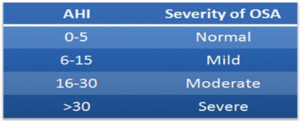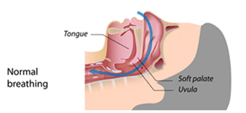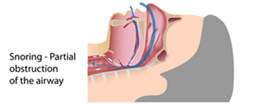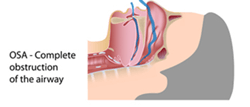
Obstructive Sleep Apnoea (OSA) is a medical condition resulting usually due to a physical blockage of the airway. Apnoea is defined as not breathing for 10 seconds or more. Each apnoea episode can last anywhere from 10 seconds to 2 or more minutes. It is basically the same as holding your breathe for 2 minutes or more. A person is diagnosed with OSA if they have 5 or more apnoeas an hour.
During sleep, your jaw and tongue relax and can drop down onto the throat. This collapsing can constrict the airway and make it difficult or impossible to breathe. The brain normally panics and interrupts your sleep cycle to bring you back to a lighter sleep, or even wake you up, so you can breathe.

39% of men, and 14% of women have OSA. OSA can be mild, moderate or severe. Even though someone may have mild OSA, they need some form of management, because there’s the likelihood their OSA will worsen to moderate, or severe if left untreated. Research has also noted that OSA may lead to Temporomandibular Disorders (TMD) and orofacial pain.




Many people think snoring and OSA are completely separate issues, however they are not. Snoring will eventually lead to OSA if left untreated. This is due to weakening of the oral musculature that supports the bottom jaw and tongue from collapsing.
Next Steps
For Rapid Relief & Lasting Results Call (03) 9824 8868
(03) 9824 8868
OrClick Here to Book Online